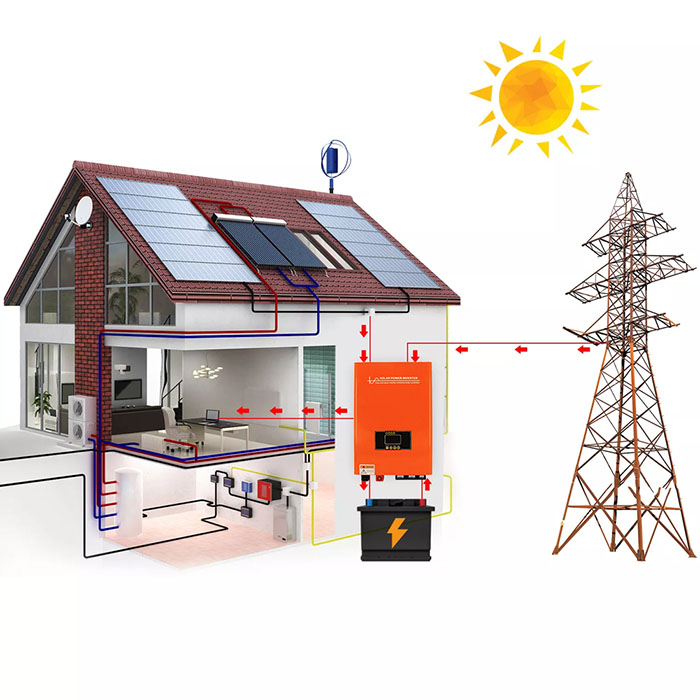How to configure and select a PV inverter?
 May 23,2022
May 23,2022

 Rekesun
Rekesun
Photovoltaic inverter is the main and important part of photovoltaic power generation system. In order to ensure the normal operation of the photovoltaic power generation system, the configuration and selection of photovoltaic inverters are more important. The configuration of the inverter should be determined according to the technical indicators of the entire photovoltaic power generation system and the product specification provided by the manufacturer, and the following technical indicators should be mainly considered.

1. Rated output power
Power rating indicates the ability of the PV inverter to supply power to the load. PV inverters with higher power ratings can drive more loads. When choosing a photovoltaic inverter, the first consideration should be to have enough rated power to meet the electrical power requirements of the equipment under the maximum load, as well as the expansion of the system and the access of some temporary loads. When the electrical equipment is dominated by pure resistive loads or the power factor is greater than 0.9, the rated output power of the photovoltaic inverter is generally 10%-15% larger than the total power of the electrical equipment.
2. Output voltage regulation performance
The regulation performance of the output voltage indicates the regulation ability of the output voltage of the photovoltaic inverter. General photovoltaic inverter products give the percentage of the fluctuation deviation of the output voltage of the photovoltaic inverter when the DC input voltage changes within the allowable fluctuation range, which is usually called the voltage regulation rate. A high-performance photovoltaic inverter should also give the deviation percentage of the output voltage of the photovoltaic inverter when the load changes from zero to 100%, which is usually called the load regulation rate. The voltage regulation rate of an excellent photovoltaic inverter should be less than or equal to 3%, and the load regulation rate should be less than or equal to 6%.

3. Overall Machine Efficiency
The overall efficiency represents the power loss of the photovoltaic inverter itself. PV inverters with larger capacity also give efficiency values at full load and low load. Generally, the efficiency of inverters below KW level should be 80%-85%; the efficiency of 10KW level should be 85%-90%; the efficiency of higher power must be above 90%-95%. The efficiency of the inverter has an important impact on improving the effective power generation of photovoltaic power generation systems and reducing power generation costs. Therefore, the selection of photovoltaic inverters should be compared as much as possible, and products with higher comprehensive efficiency should be selected.
4. Startup performance
The photovoltaic inverter should be guaranteed to start reliably under the rated load. High-performance photovoltaic inverters can be started at full load multiple times without damaging power switching devices and other circuits. For their own safety, small inverters sometimes use soft-start or current-limited start-up measures.



 Home
Home The composition of off-grid photovoltaic power generation
The composition of off-grid photovoltaic power generation 







 syplighting.en.alibaba.com
syplighting.en.alibaba.com



